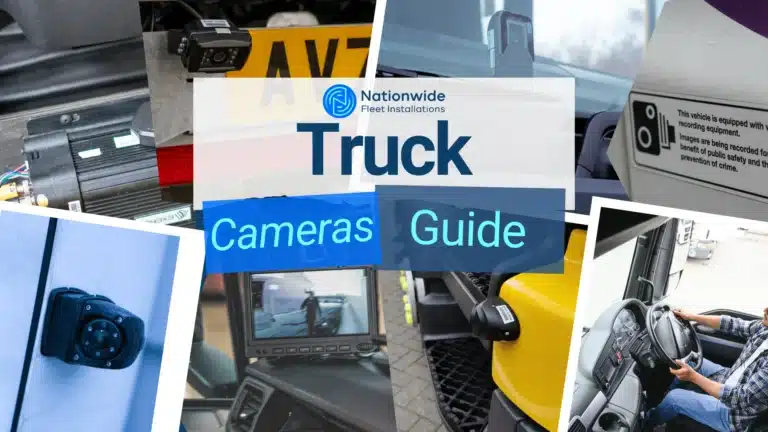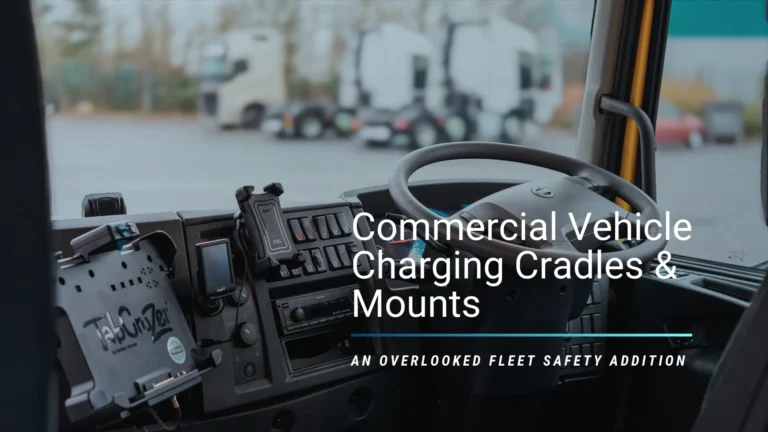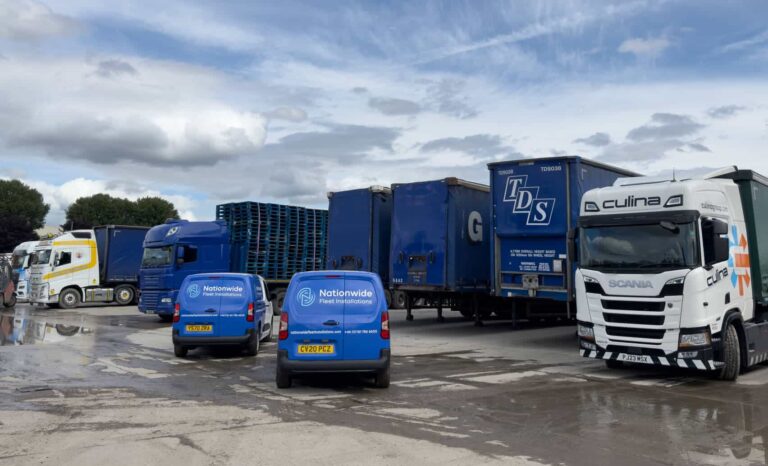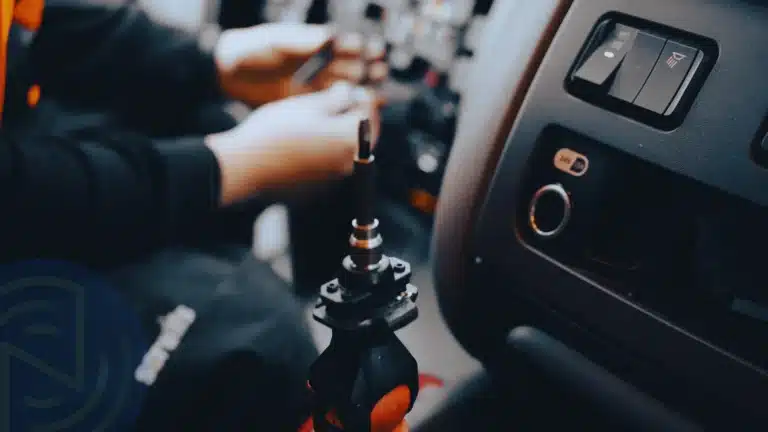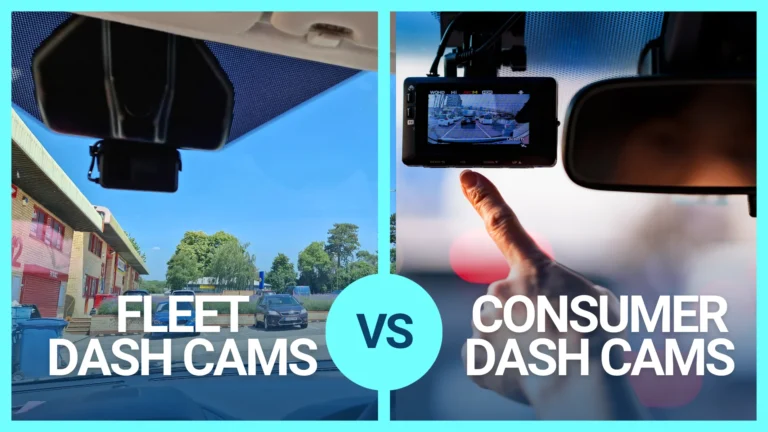Benefits of Telematics
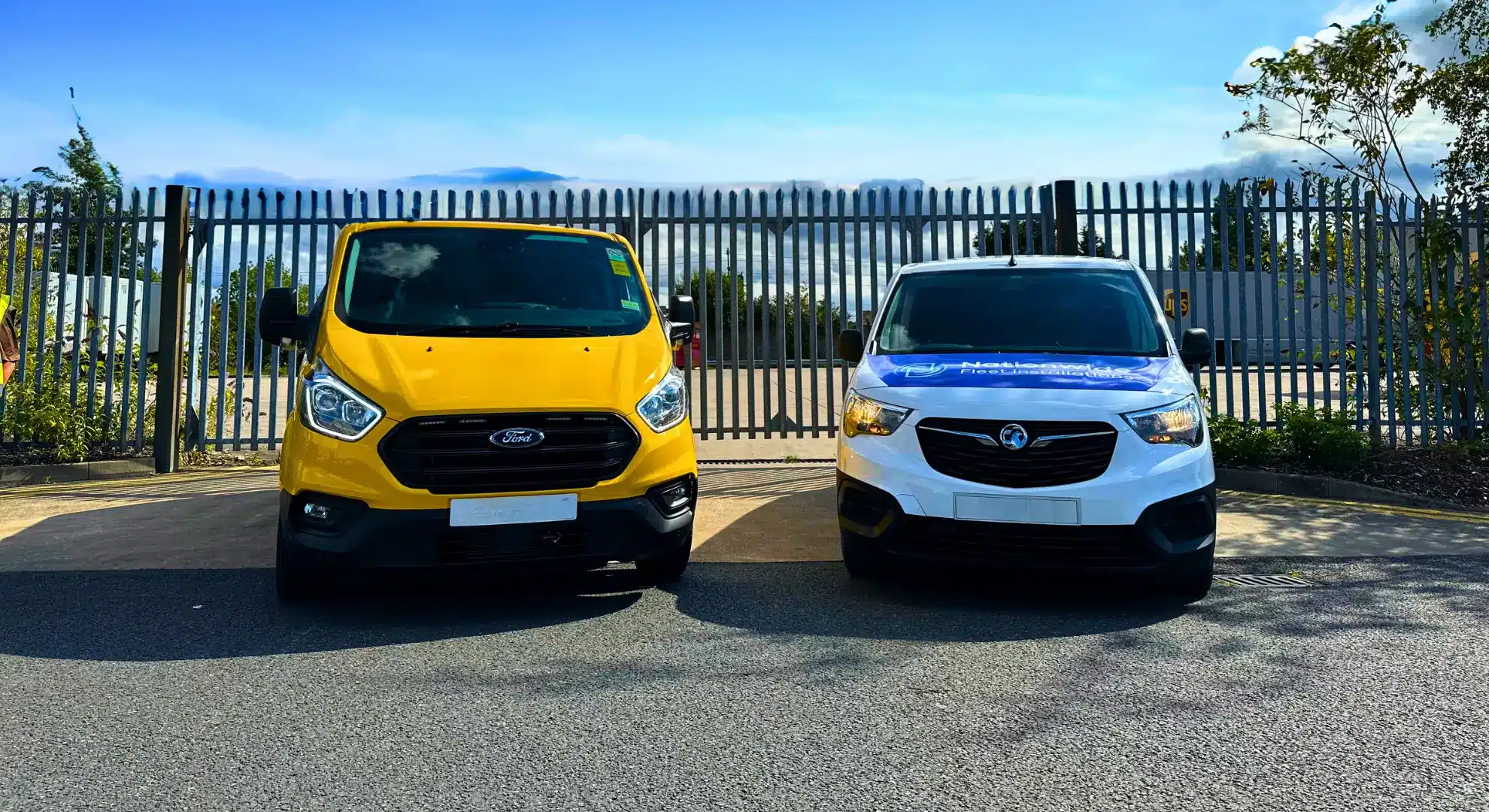
Why Telematics Matter for Fleet Operators
Feeling overwhelmed by the myriad of telematics options? With so many systems on the market, it can be hard for fleet managers to know which one is right for their operations. But the right telematics solution can do far more than just track vehicles, it can cut fleet running costs, boost efficiency, improve safety, and ensure compliance.
In this blog, we’ll break down the key benefits of telematics and help you understand what to look for when choosing a system that works for your fleet.

Our Unique Perspective As Independent Installers

It is natural to wonder why we are covering the topic of telematics benefits, given the abundance of available resources, both from suppliers, automotive organisations and academic sources. However, our role as experienced independent telematics installers in the fleet management sector brings a distinct perspective – one that shows us the benefits and how they apply to different sectors.
Our extensive experience in installing a diverse array of telematics solutions allows us to fully appreciate the various features and benefits available. Additionally, our ongoing communication with suppliers and customers enables us to gather valuable insights from multiple stakeholders in the industry. This interaction, coupled with the considerable investments made by both telematics providers and fleet operators, gives us an interesting view and helps us to appreciate the depth of commitment to innovation within the industry.
Innovation Brings Benefits That Deliver Real Results
The journey of telematics in fleet management began in the late 1990s with basic Bluetooth-enabled kits. Fast-forward to 2025, and we are witnessing a telematics revolution that has drastically transformed how people manage commercial vehicles.
Initially, simple tracking systems emerged, enabling real-time vehicle and engineer monitoring. Over the years, early telematics kits have evolved into sophisticated systems that can now integrate features such as video telematics with multiple camera channels, digital video recorders (DVR), connected dash cams, and AI warning systems. This remarkable evolution shows one of telematics’ primary advantages: the continued innovation aimed at addressing fleets’ day-to-day operational challenges.
Key Advantages of Telematics for Fleet Management
Enhanced Data Insights for Fleet Operators
Telematics have empowered fleet operators to shift from basic gps vehicle tracking to obtaining a wealth of critical data such as braking, cornering, fuel levels, distance to vehicle in front to form comprehensive driver behaviour analytics. This transition has significantly increased the depth of insights available; a transformation many fleet managers cite as a key reason for investing in telematics technology.
Real-time Driver Behaviour Monitoring
Fleet telematics allows for real-time driver behaviour monitoring, helping fleet managers go beyond older methods like “How is my driving?” stickers to actionable data with historical trends. Telematics systems record the data and allow operators to see data such as speed, cornering, braking, and distracted driving events. The driver behaviour data is used to coach drivers, provide feedback, and reward good driving behaviour backed by actual data. This shift is pivotal in being proactive and preventing incidents before they happen.
Historical Trends and Predictive Decision-Making
The variety of telematics data, coupled with the ability to access historical insights, enables more effective fleet management. With tools to monitor vehicle utilisation, fleet managers gain a clearer understanding of how vehicles are operated and scheduled, allowing for more informed operational decisions. Detailed data analytics support critical decision-making processes, helping fleet operators predict potential issues before they arise, identify any knock-on effects of decisions, and optimise resources effectively.
Improved Fleet Safety
Commercial vehicle operators using telematics benefit from features and enhancements designed to improve fleet safety, protecting drivers and vehicles and ensuring operations are carried out responsibly. Telematics supports the implementation of safety policies and practices by helping monitor compliance and measuring effectiveness. Without it, verifying whether policies are being followed becomes far more resource-intensive.
Reduced Risk Of Accidents
In addition to managing the cost of fuel, accidents pose a significant challenge for fleet operators. In 2021, the Department for Transport (DfT) reported that commercial vehicles, including vans and heavy goods vehicles (HGVs), were involved in more serious and fatal accidents per mile than any other mode of transport.
Preventing accidents is the main purpose of fleet safety, and telematics helps to ensure this in many ways. For example, sensors and cameras can be retrofitted to vehicles to alert drivers of the presence of vulnerable road users, log vehicle safety checks and report errors.
Telematics has proven beneficial in two primary ways: first, by helping to prevent accidents from occurring, and second, by providing valuable data to analyse the causes of accidents when they do happen. This information can then be applied to prevent similar accidents in the future.
Protect Brand Image
Telematics also helps protect your brand image. When you have a large fleet of vehicles, it can be hard to physically track how each of those vehicles is being driven. However, telematics data can show you which vehicles are speeding, taking harsh corners, braking hard and swerving through technology such as fleet tracking, G-sensors, video telematics and camera systems. These systems reveal these behaviours and provide data so that you can work on eliminating dangerous driving behaviour.
In the long run, this helps protect your brand image as your vehicles will be driven safely, resulting in fewer complaints from the public and other road users about how your vehicles are being driven. You can demonstrate that you operate a safe fleet. This aspect cannot be ignored as fleet managers and drivers have a duty of care to ensure that employees and other road users are not put in danger.
Reduce Vehicle Downtime
One of the key advantages of telematics is that it provides a holistic view of fleet operations, monitoring not just the driver, but also vehicle performance and how each vehicle is being used on the road. This comprehensive insight helps reduce the risk of accidents and vehicle damage by promoting safer, more responsible driving. As a result, vehicle downtime is reduced. With fewer incidents and less wear and tear, vehicles spend less time off the road for repairs, keeping operations running smoothly and efficiently.
Vehicle Maintenance
Traditionally, vehicle maintenance was more reactive and scheduled. However, one of the advantages that telematics has brought into the fleet sector is predictive maintenance. By logging vehicle checks and bringing together data from the vehicle, such as mileage, vehicle health, and routes, fleet managers can predict when/which vehicles are likely to break down and plan maintenance ahead of time, resulting in more productive operations.
In conclusion, it is very clear that a well-implemented telematics programme links safety and cost savings together, allowing fleet operators to experience both benefits.
Financial Benefits of Telematics
Fleet telematics can help fleet operators save money across their operations. While it may seem counterintuitive at first, given the upfront investment, fleet management providers often emphasise the return on investment. That’s because the right telematics platform can quickly pay for itself by helping fleets reduce costs, operate more efficiently, and maximise vehicle utilisation.
Improved Route Planning
Route optimisation and planning are among the most immediate cost-saving benefits of telematics. Rather than relying on drivers or admin staff to manually determine the quickest or most efficient routes, often using inconsistent navigation tools, telematics enables automated route planning. It calculates the optimal route based on the type of vehicle, scheduled stops, delivery time windows, and other key variables. This ensures the right vehicles are assigned to the right jobs.
Telematics also allows fleet managers to track drivers and routes in real-time, supporting both safety and compliance. It helps fleets adapt quickly to last-minute changes and better manage customer expectations through more accurate ETAs and updates.
Lower Fuel Consumption
Fuel is one of the largest, if not the largest operating of costs for fleet operators. Telematics helps reduce fuel expenditure in several ways. It tracks fuel usage and spending, providing visibility across the fleet. It can also identify underperforming or faulty vehicles through wear and tear monitoring, allowing timely repairs. In addition, by improving driver behaviour, reducing speeding, harsh braking, and excessive idling; telematics supports more efficient driving, which leads to significant fuel savings.
Better Vehicle and Asset Utilisation
Telematics helps fleet managers optimise the use of vehicles and assets by providing data on utilisation patterns. This insight allows for smarter allocation of resources, ensuring vehicles aren’t left sitting idle unnecessarily. The construction sector, in particular, relies heavily on telematics for this purpose.
By maximising vehicle utilisation, fleet operators can make informed decisions, such as adding more resources efficiently, reducing the overall fleet size, implementing driver coaching, or improving site logistics. All of these lead to significant cost savings across vehicle acquisition, maintenance, and insurance.
Reduced Insurance Premiums
Some insurance providers offer reduced premiums for fleets that implement telematics systems. The data collected through telematics demonstrates a commitment to safety and provides evidence of responsible driving behaviours. This can result in substantial savings on insurance costs, further enhancing the return on investment for telematics implementation.
Faster Claims & Electronic First Notice of Loss (eFNOL)
Fleet operators often find that claims processes can take longer than necessary, leading to extended vehicle downtime, reduced productivity, and increased costs, such as hiring replacement vehicles. EFNOL (Electronic First Notice of Loss) improves the process by quickly reporting accidents to your insurance company, documenting damage, loss, or theft of the insured vehicle. This step is crucial in initiating an insurance claim. By utilising telematics, eFNOL claims can be automated, leading to faster processing times. Additionally, this system helps to quickly identify fraudulent claims and reduces the likelihood of human error.
To conclude this section, fleet telematics has been proven to reduce operational costs such as fuel and vehicle usage, improving efficiency, saving time and overall operations. It is often adopted by field service engineering, logistics, transport, and delivery companies.
More Context
For a long time, telematics allowed fleet managers access to valuable data, like speed, location, and braking events, but it always missed the full picture. Without visual context, it was often difficult to understand why an incident occurred or how events unfolded, leading fleet operators to still rely on eyewitness accounts.
Now, with video telematics made possible by vehicle cameras, DVR systems, and fleet CCTV, that missing context is available. Fleet managers can see what really happened, stay better informed, and make faster, evidence-based decisions. This not only improves safety and driver accountability, but also delivers financial, operational, and compliance benefits.
Versatility Across Vehicle Types
Telematics technology can be installed in a diverse array of vehicles, making it highly versatile and suitable for various fleet compositions, including cars, vans, heavy goods vehicles (HGV), road sweepers, bin lorries, and construction and off-road vehicles. Various connectors and adapters exist that make integration possible. This adaptability ensures fleet managers can optimise operations across different sectors and vehicle types, further maximising efficiency.
Professional Installation Assurance
Choosing telematics also means having the backing of professional vehicle technology installation services. Reliable telematics installation companies can ensure that the necessary technology is fitted accurately in vehicles, alleviating concerns regarding the complexity of hardware integration. This professional support minimises vehicle downtime and ensures every vehicle is connected, allowing fleet managers to focus on their core operations without the added stress of technical difficulties.
Compliance and Regulatory Support
Telematics provides real-time compliance monitoring, helping fleet operators run safe and lawful operations while reducing the risk of accidents, fines, and non-compliance penalties. Whether managing vans, HGVs, or mixed fleets, operators must adhere to a range of vehicle-specific regulations. These can vary by sector, with each industry subject to its own safety standards and legal requirements.
Real-Time Compliance Monitoring
It’s not only essential to follow these regulations, they must also be actively monitored to ensure ongoing compliance. This is where telematics plays a vital role. It helps fleets maintain accurate records, verify regulatory adherence, and monitor the functionality of safety-critical equipment. If a system malfunctions or breaks down, telematics can immediately alert both the driver and fleet manager, enabling swift action to resolve the issue.
Examples of Regulatory Benefits
Below are a few key areas where telematics supports compliance:
Direct Vision Standard – DVS
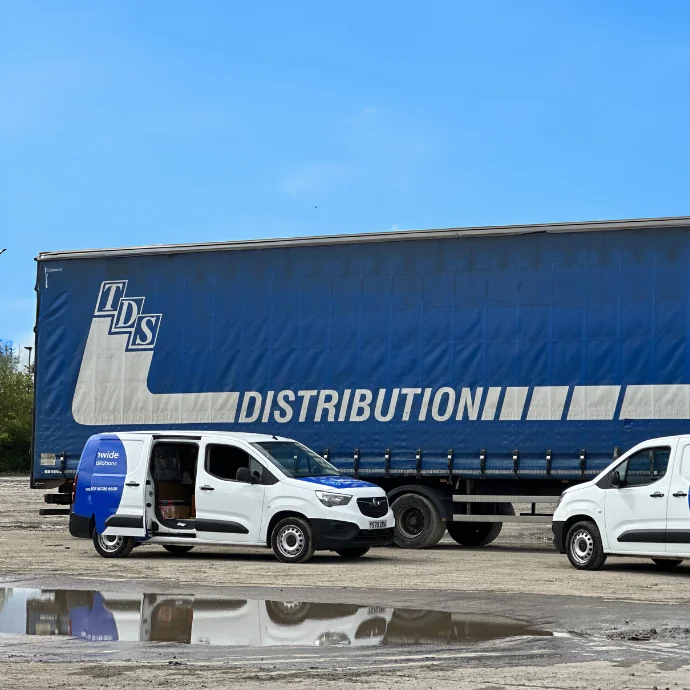
All HGVs 12 tonnes and over must have a safety permit before operating in London. From October 2024, HGVs with a rating of two stars or below must fit a Progressive Safe System (PSS). Some camera systems can be retrofitted to vehicles as they meet the specifications required by Transport for London (TfL). Telematics such as camera systems help reduce blind spots around HGVs and keep vulnerable road users safe.
Vehicle Weights
One aspect of operations for commercial vehicle fleet managers is monitoring vehicle weights. Overweight vehicles can affect their operability and pose a risk to other road users. Telematics allows fleet operators and drivers to monitor weight effectively through various technologies. From onboard vehicle weighing to weigh-in-motion systems (WIM) that don’t directly measure vehicle weight, telematics can be integrated with WIM systems to monitor axle loads and ensure compliance with weight regulations.
Payload Estimation
Telematics data, such as vehicle speed, acceleration, and engine performance, can be used to infer a vehicle’s payload, helping to identify potential overloading.
ZEV Mandate & 2035 ICE BAN
The government has introduced the Zero Emission Vehicle (ZEV) Mandate, which is set to transform road transport by requiring all new car and van sales to be fully electric by 2035. Fleets must start preparing for this shift; however, transitioning from internal combustion engine (ICE) vehicles to electric vehicles (EVs) isn’t a simple switch.
Fleet managers must consider vehicle types, payloads, journey lengths, and duty cycles. Telematics plays a crucial role by providing the data needed to switch to Electric Vehicles. It also supports the planning of optimal charging schedules in line with operational demands, something that would be difficult to achieve without insights from telematics.
Find out more about fleet electrification
Site Access and Safety Compliance
In the UK, sites can have safety regulations for vehicles operating on site. If they don’t meet the standards, they can be denied access. This can be a problem for contractors as without site access, employees cannot complete the work, affecting productivity and profitability. Failure to comply with or possess certain standards and certifications can mean not being eligible to tender for some projects. It can form a reputation affecting the ability to win future work. Telematics can also help in this sector.
HS2
High Speed 2 (HS2) is a high-speed railway that has been under construction in England since 2019. For this project, specific vehicle safety equipment and requirements must be met. Telematics solutions such as camera systems and route optimisation help fleet operators meet the required vehicle specifications.
Construction Sites
Some projects require fleets to comply with the Construction Logistics and Community Safety (CLOCS) standard. The CLOCS Standard requires fleet operators to use vehicles with enhanced safety features such as greater direct vision, lower axle heights and side under-run protection.
Fleet managers turn to telematics for blind spot reduction, sensors, lighting, in-cab driver alerts and warnings, AI and other vehicle safety technology to reduce people-plant interface (PPI). According to SKANSKA, People-plant interface is one of the top fatal risks identified in the construction industry. This is when people on site, i.e. workers, contractors and visitors, are struck by moving vehicles and plant. These incidents remain a critical safety concern, with the construction industry consistently reporting them among the most dangerous worksite hazards.
Vehicle Security and Theft Prevention
Telematics gives fleet operators peace of mind by helping to ensure vehicle security. Security cannot be ignored, as it directly impacts profitability, operational efficiency, and brand reputation. Fleet operators must also consider risks beyond vehicle theft, cargo and trailer theft are on the rise across Europe. As a result, fleets are increasingly advised to adopt technology solutions, like telematics, to strengthen their security measures.
Vehicles that lack telematics systems may face a higher risk of theft. Telematics can provide alerts for unusual vehicle use outside of regular hours, geographic boundaries, and instances of speeding, which may indicate theft. Access to this information enables timely communication with insurance companies, law enforcement, and vehicle tracking and recovery services, potentially enhancing recovery chances and expediting claims processing. The implementation of technologies such as immobilisation, GPS tracking, and artificial intelligence can contribute to theft prevention and enable fleets to respond promptly.
How Different Sectors Benefit from Fleet Telematics
Field Services

Field services work is carried out at customer sites and involves dispatching technicians for servicing, installation, and maintenance-type jobs. Due to the nature of this work, customer experience is very important.
Telematics offers significant advantages for customers in the field services sector, enhancing the overall service experience. In many cases, businesses find that investing in telematics becomes a valuable unique selling point (USP), helping to differentiate their offering from competitors.
Clients can access precise estimated arrival times, receive timely dispatch notifications, and stay informed about job completions, including their duration and any relevant notes. This level of transparency and communication can significantly improve service reliability. Telematics adds value, improves customer satisfaction, and supports customer retention.
Transport and Haulage
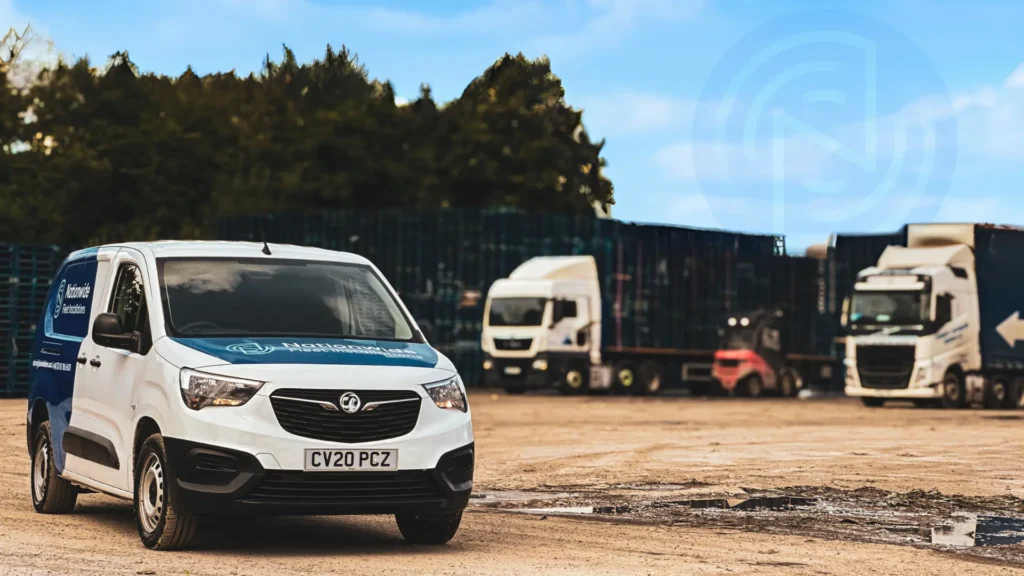
The transport sector uses a wide variety of vehicle types, but some carry a significantly higher level of risk than others, particularly vans and HGVs. Due to their size, weight, limited visibility, and longer journeys, these vehicles can pose serious safety challenges.
In the transport sector, telematics is providing essential safety enhancements to help mitigate these risks. Features such as blind spot detection, driver behaviour monitoring, and real-time tracking all contribute to making these vehicles safer. For vans, which are increasingly common on UK roads due to the growth of e-commerce and delivery services, telematics helps monitor driver hours, optimise routes, and prevent overloading. For HGVs, systems can integrate with tachographs, fleet management software and offer rear and side blind spot detection, all vital for vehicles with restricted visibility.
Construction
Efficiency and profitability are critical in the construction sector. Contractors want visibility into how well their assets are being utilised and how to get more out of their operations. Telematics is gaining traction in the industry, providing operators with the hardware, software, and connectivity needed to monitor machinery more effectively and improve operational efficiency.
Sustainability with telematics
With sustainability now a key consideration when tendering for projects and reducing environmental impact, telematics supports the construction sector by providing data that enables informed decision-making. This includes identifying trends, where additional machinery may be needed, and issuing maintenance reminders. These insights improve operational efficiency, help ensure projects are completed on time, and maximise resource utilisation. Some telematics platforms can also highlight which vehicles and plant are suitable for transitioning from internal combustion engines to electric alternatives.
Plant theft
Theft is also affecting this sector. According to the Construction Plant-hire Association (CPA), an estimated £100 million+ of plant is stolen every year. Using telematics, plant and heavy machinery owners can keep track of their assets and know where they are at all times. You can also rely on geofencing to prevent unauthorised use of assets.
Insurance companies even recommend vehicle technology and fleet management with features like remote immobilisation to construction firms to help them reduce the risk of unauthorised use and theft.
Emergency Services
The emergency services also rely on telematics for fleet management. Data is a crucial aspect of operations as it can be the difference between life and death. With time being of the essence, telematics can help drivers get real-time job information and dispatch notes to keep the driver updated.
Public sector budgets fluctuate, and when they are reduced, everyone scrambles to find efficiencies, especially in fleet management. We have noticed that telematics gives fleet managers full visibility of their fleet, allows them to see how vehicles are being used, monitors private mileage, and reduces reliance on hire vehicles. Telematics solutions often used for emergency services include vehicle tracking, communication, mobile digital vehicle recorders (MDVR), and camera systems.
The emergence of camera systems in the emergency services has greatly benefitted departments such as the fire service. With claims on the rise, cameras are becoming necessary to help in cases where there has been a crash; fleet cameras can support drivers to prove innocence. The footage can serve as evidence in incidents of arson, attack and recording footage for training to improve the service in the future.
For police forces, multiple video sources can be combined to provide a comprehensive view of an incident. This may include body-worn camera footage, driver-facing cameras, dash cams, and wider vehicle camera systems. The integration extends beyond hardware, incorporating data such as vehicle speed, driver behaviour, and Driver ID to build a complete picture.
The level of insight provided by telematics systems significantly enhances the response capabilities of emergency services. It also supports post-incident analysis, coaching, and preparation for future events, ultimately contributing to improved outcomes and saving lives.
Taxis and Public Transport

With rising fuel and insurance costs, telematics has become essential to the taxi and private hire market. It helps managers and drivers see where vehicles are, work out fuel-efficient routes, and provide a first-class experience for their customers by giving accurate arrival times, telling them who their driver is, registering their cars, and offering connected experiences through apps.
With “crash for cash” a major problem on UK roads, taxi drivers are often the unfortunate victims of these schemes. Dash cams and camera systems go a long way to protecting drivers and reducing the risk of insurance premiums rising.
Telematics also adds an additional layer of safety for both passengers and drivers. However, each local authority has its own set of policies and regulations, which can vary significantly. For example, some authorities do not permit passengers to be visible in footage, others prohibit audio recording, and some only allow video to be stored in the cloud.
Telematics providers consider these requirements, and we’re now seeing systems that allow features such as audio recording to be switched off and passenger faces to be automatically blurred. Footage can also be encrypted and accessed remotely, ensuring compliance while maintaining safety and privacy standards.
Local Authority
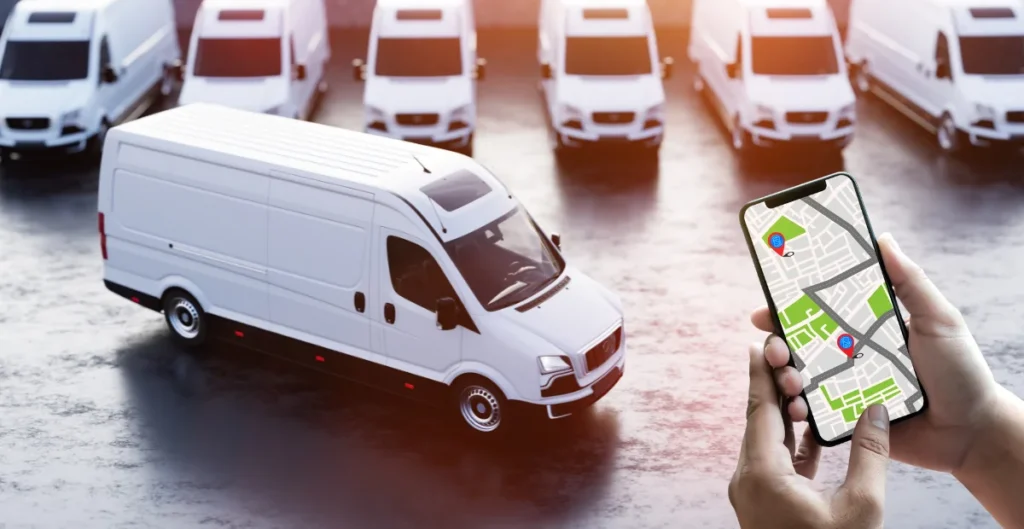
Telematics offers local authorities a smart, data-driven way to improve services delivered and managed. By using GPS tracking, onboard cameras, and real-time data, councils can prove that essential tasks, like road sweeping or bin collections have been completed, helping to boost accountability and public trust. It also helps teams monitor work progress as it happens, making it easier to respond to delays or issues.
Beyond day-to-day operations, telematics supports evidence-based decision-making and policy development by analysing vehicle use, fuel efficiency, and driver behaviour. This not only aids in achieving carbon reduction goals but also enhances risk management, cuts down on accidents, and keeps costs in check by giving visibility over vehicle maintenance and running costs. Ultimately, it helps councils meet their duty of care while delivering services more efficiently and sustainably.
Retail

Retail fleets depend on telematics to support their operations. For fresh food transportation, optimum temperature levels are crucial to reduce spoilage. Telematics helps maintain temperature-controlled foods, ensuring they arrive on time and in good condition so that retailers can be confident in their products.
Another problem arising for this sector is illegal clandestine entrants trying to get to the UK. If people are found hiding in vehicles and detached trailers, the vehicle’s owner, hirer or driver can be fined. Companies may also be held liable for fines imposed on their drivers. Telematics can alert drivers if doors are opened and give drivers visibility of loading areas and multiple angles around the vehicle to alert them of any possible entrants.
Vehicle Hire & Leasing
Vehicle hire and leasing fleets benefit from telematics, as they can see how vehicles are being driven and used. Data can be generated automatically, showing fleet managers detailed management information.
The technology also allows them to reduce the risk of vehicle theft by tracking vehicles in real-time, remotely immobilising them, and reporting to the police early. Telematics has helped this sector grow and improve client experience, as demonstrated by companies like Zipcar, which rely heavily on telematics for their business model.
Conclusion
In conclusion, the multifaceted benefits of telematics are reshaping the way fleet operators manage their vehicles. Gone are the days of making decisions without reliable data; data analytics now empowers fleet managers with critical insights that drive operational efficiency and support data-driven decision-making.
As the telematics market continues to evolve, those who embrace these technologies, particularly when working with experienced installation partners like us, will benefit from improved performance, reduced costs, easier vehicle management, greater compliance control, and business growth. All of this is made possible through the power of telematics.

